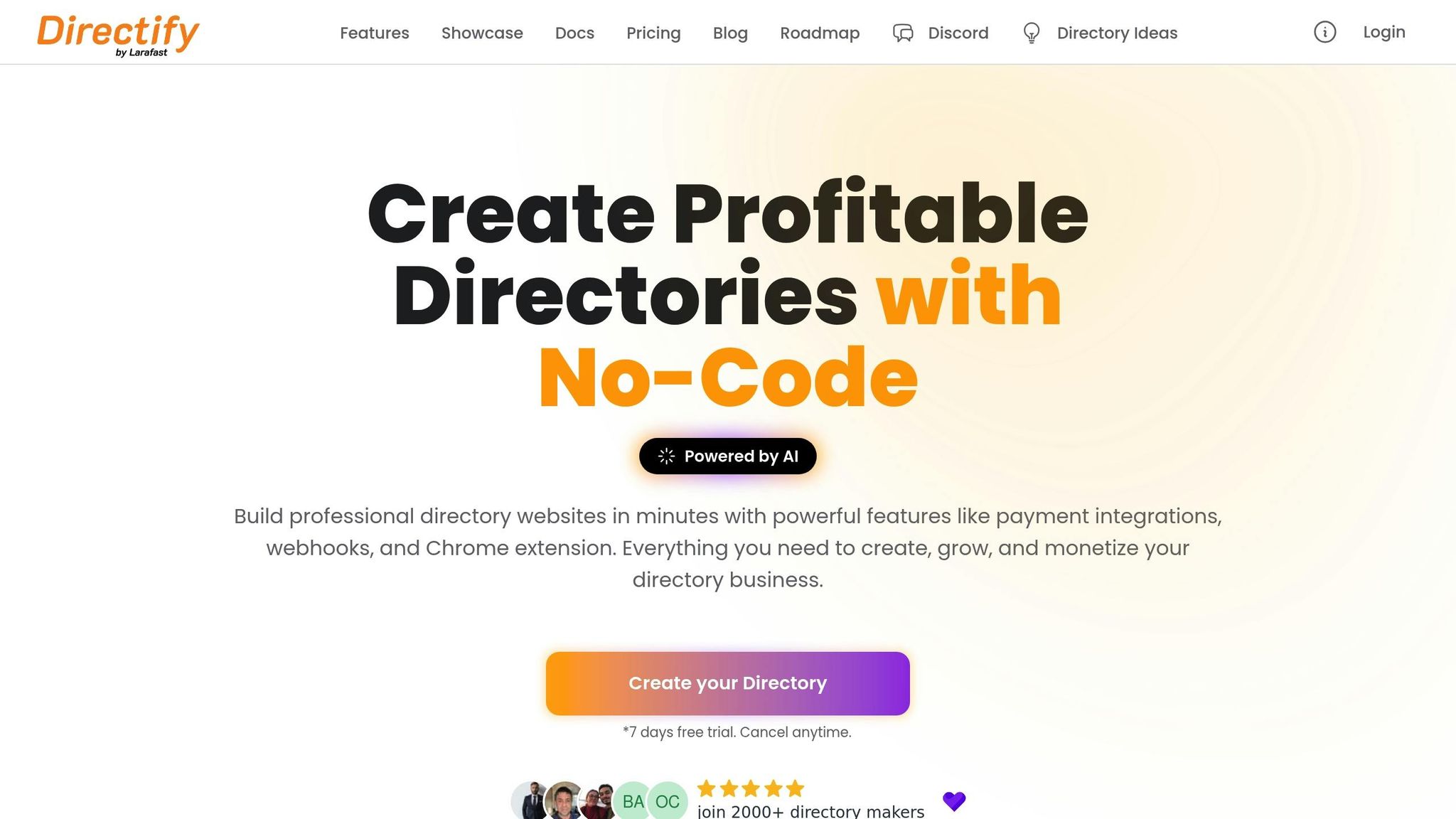
Geo-targeted listings help businesses connect with local customers by tailoring content to specific locations. They improve local search visibility, boost customer engagement, and increase sales. Here’s why they matter and how you can use them:
Why Geo-Targeting Works:
How to Set Up Geo-Targeted Listings:
Tips for Success:
Geo-targeting isn’t just about visibility - it’s about connecting with customers where they are. Follow these steps to create effective local directory listings and stand out in search results.
Geo-targeting tailors content to users based on their physical location. It relies on data like IP addresses, GPS, and Wi-Fi signals to connect users with nearby businesses or services [1]. For example, when someone searches for "coffee shops", geo-targeting uses these signals to suggest options closest to their current location.
This strategy can supercharge marketing efforts, with studies showing it can improve campaign effectiveness by as much as 80% [4]. By pinpointing user locations and prioritizing relevant nearby listings, geo-targeting ensures businesses can deliver highly targeted and relevant results.
Expanding on these principles, research highlights that 74% of consumers turn to search engines to find local businesses, and over half of these individuals make a purchase within 72 hours [2]. This demonstrates the power of geo-targeted listings in driving both visibility and action.
| Benefit | Impact |
|---|---|
| Local Search Visibility | A 200% surge in "Where to buy... near me" searches [3] |
| Purchase Intent | Location-specific content leads to a 61% boost in conversion rates [2] |
| Customer Experience | 71% of users expect communications tailored to their location [2] |
"Geo-targeting is the practice of tweaking our marketing message to specific geographic locations. It's a way to connect with future customers on their turf, whether they're on their phones, tablets, or computers." - Jason Donegan, Seasoned and Published Writer, Nomadic Advertising [1]
To make the most of geo-targeted listings, businesses should prioritize the following:
When executed effectively, geo-targeting can lead to more website visits, phone inquiries, and in-person store visits [5]. This is especially impactful for businesses that depend on foot traffic, as it helps connect them with nearby customers who are ready to make a purchase [4].
Understanding these geo-targeting fundamentals lays a strong foundation for creating a directory structure that maximizes local engagement.
When it comes to geo-targeting, having a well-organized directory structure is key to creating accurate and effective local listings.
Decide on the geographic scope that will best connect with your local audience. According to a Think with Google study, 60% of smartphone users have contacted a business directly from search results using features like "click to call" [6].
Here are some factors to consider:
Grouping your listings by geographic areas helps align with how people naturally search. Here's a simple structure to follow:
| Location Level | Example Structure | Purpose |
|---|---|---|
| Primary Markets | Los Angeles, Chicago, Houston | Major city hubs |
| Secondary Areas | Venice Beach, Lincoln Park | Neighborhood focus |
| Regional Terms | SoCal, Midwest, Gulf Coast | Broader regional view |
Use location-specific keywords naturally throughout your content. For example, a fitness directory might include phrases like "gyms near downtown" or "fitness centers in Beverly Hills" [7].
Tailoring your content to fit local preferences can make a big difference. Research shows that 70% of online consumers prefer content that's relevant to their local context [8].
"To succeed worldwide, you need to tweak your content for different areas. Learn about Locals by researching to really get who your local audience is and what they like. Make sure your language is spot on; get pros to translate for that pro touch."
- Francisco Enciso Aponte, Gerente en SOLID SRL [9]
Here are some must-have elements for regional content:
For better engagement, create dedicated location pages that include:
This structured approach lays the groundwork for leveraging Directify's geo-targeted features and improving the visibility of your listings.

Directify offers custom location fields that make it easy to create a searchable, geo-targeted directory. Here's a breakdown of how different field types can be used effectively:
| Field Type | Purpose | Example Usage |
|---|---|---|
| Text Area | Service coverage zones | List of neighborhoods served |
| Rich Editor | Business hours | Operating times by location |
| Number | Distance radius | Service area in miles |
| Checkbox | Location features | Parking availability, wheelchair access |
For better search functionality, enable the 'Filterable' option for number and checkbox fields. This allows users to refine their searches by criteria like distance or specific amenities. To further enhance the user experience, consider adding maps to your listings for a more visual and intuitive approach.
Embedding Google Maps into your directory listings can significantly improve user engagement by providing a clear visual context for locations. In fact, a directory owner reported a 40% increase in user interaction after incorporating map integration in January 2025 [10].
How to integrate maps:
"Would be great to have Google Maps shown at the end of the listing (right after the content markdown). It’s free (no API access needed) and gives a really professional style to it 🙂" - Sergey [10]
Consistency is key when managing geo-targeted data, and automated rules can help streamline this process. Use these rules to:
Directify's Google Sheets integration integration is a powerful tool for quickly updating and verifying location data. By structuring your rules to handle both broad regional searches and detailed neighborhood queries, you can ensure your directory meets the needs of users across all geographic levels.
Once your directory structure is set up, the next step is to make sure your listings stand out in local searches. To boost discovery in geo-targeted areas, focus on local SEO and fine-tune your content for maximum impact [11].
With your directory organized, it’s time to optimize each listing for local search engines. Back in April 2025, Content Whale highlighted the importance of using proper local SEO strategies to improve search rankings [11].
| Optimization Element | Strategy | Benefit |
|---|---|---|
| Business Profile | Add complete NAP (Name, Address, Phone) details, upload photos, and update regularly | Improves visibility |
| Keywords | Use location-specific terms in titles and descriptions | Increases ranking potential |
| Citations | Ensure consistent business details across platforms | Builds credibility |
| Reviews | Actively manage and respond to reviews | Enhances trust |
How to Maximize Local Visibility
Fine-Tune Your Business Profile
Make sure your Google Business Profile is complete with accurate information, appealing photos, and regular updates. This can significantly improve your local visibility [11].
Build Credibility with Consistent Citations
Ensure your business information is consistent across all platforms. This consistency strengthens your local authority and boosts your rankings [12].
"By focusing on geo-targeting, your content becomes more relevant to the searcher, increasing the likelihood of engagement and conversion." – Wired Media [13]
Pair your SEO efforts with location-specific content to truly connect with your community. Why does this matter? A whopping 72% of local searchers visit a business within five miles of their location [14].
Develop Location-Specific Pages
Create dedicated landing pages for each of your service areas. Include elements like:
Capitalize on "Near Me" Searches
With "near me" searches growing by 150% [15], naturally integrate location-based keywords into your content to capture this traffic.
Prioritize Mobile Optimization
Considering that 88% of people searching for local businesses on mobile devices either visit or call within 24 hours [11], it’s crucial to focus on:
After setting up and optimizing geo-targeted listings, keeping location data accurate and up-to-date is crucial for maintaining successful directory listings.
Why does this matter? Because 20–30% of provider details change every year [18]. This makes regular verification a must to ensure your listings stay reliable.
Verifying the accuracy of your listing data isn't just a good idea - it's often required. For example, the Consolidated Appropriations Act (CAA) mandates care providers to validate their online directory information every 90 days [16].
How to Validate Your Data
To ensure your data is always accurate, consider these steps:
Once your verification system is in place, make sure it’s flexible enough to handle temporary changes without creating confusion.
Temporary changes, like seasonal closures, renovations, or special events, can disrupt your listings if not managed properly. Keeping these updates timely ensures your customers always have the right information.
Tips for Managing Temporary Changes
When dealing with short-term adjustments, focus on:
Real-World Example
Take McDonald’s, for instance. They use geo-fencing to keep their location-based services accurate. This approach also helps them manage temporary changes, like special promotions or localized menu updates [17].
Steps to Keep Data Accurate During Changes
Even small errors can hurt your listings. CMS audits have found error rates as high as 52% in sampled directories [18], showing how essential precise data is.
For businesses with multiple locations, a centralized provider data management (PDM) system can simplify the process. With such a system, you can consolidate updates and automate changes across all listings [18].
Using geo-targeted listings is a smart way to boost local search engagement and connect businesses with customers in their area.
The numbers back this up - geo-targeting leads to higher user intent and more engagement from mobile searches [21].
Directify simplifies the process of creating geo-targeted directories with features like:
To make the most of your directory, remember to keep NAP (Name, Address, Phone Number) details consistent, use local schema markup, and routinely verify the accuracy of your data.
To keep your geo-targeted listings precise and current, it’s essential to review your data regularly. This helps you spot and fix outdated or incorrect details. Leveraging automated tools can make this process quicker and ensure your information stays consistent across all platforms.
You can also invite users to report mistakes or suggest updates, which adds another layer of accuracy. Implementing a centralized management system can streamline the process of updating multiple listings, keeping everything organized and efficient. Staying on top of these updates not only ensures reliability but also strengthens customer trust and boosts your visibility in search results.
To make your geo-targeted listings shine for mobile users, start by ensuring your directory website works smoothly on mobile devices. This means using a responsive design, speeding up loading times, and keeping navigation simple so users can easily find what they need, even on smaller screens.
Next, include localized content that connects with your audience. Use area-specific keywords, mention local landmarks, or highlight events happening in the region. These touches make your listings feel more relevant and engaging to users on the go.
Finally, double-check that your business details - Name, Address, and Phone (NAP) - are consistent across all platforms. Also, encourage customers to leave reviews. Positive reviews not only build trust but can also help improve your local search rankings. By following these steps, your geo-targeted listings will be better positioned to grab attention and perform well on mobile devices.
Geo-targeted listings are a powerful way to strengthen your local SEO by customizing your content to specific areas. This approach helps your business show up in local search results, making it easier to connect with nearby customers and bring more relevant traffic to your site.
Using location-specific keywords and tools like Google Maps can improve your search rankings and make your business more visible to local audiences. Considering that nearly 46% of Google searches focus on location, optimizing for local SEO is key to boosting foot traffic, online interactions, and conversions.
Start creating your professional directory website today with Directify's no-code platform.
Get Started Free